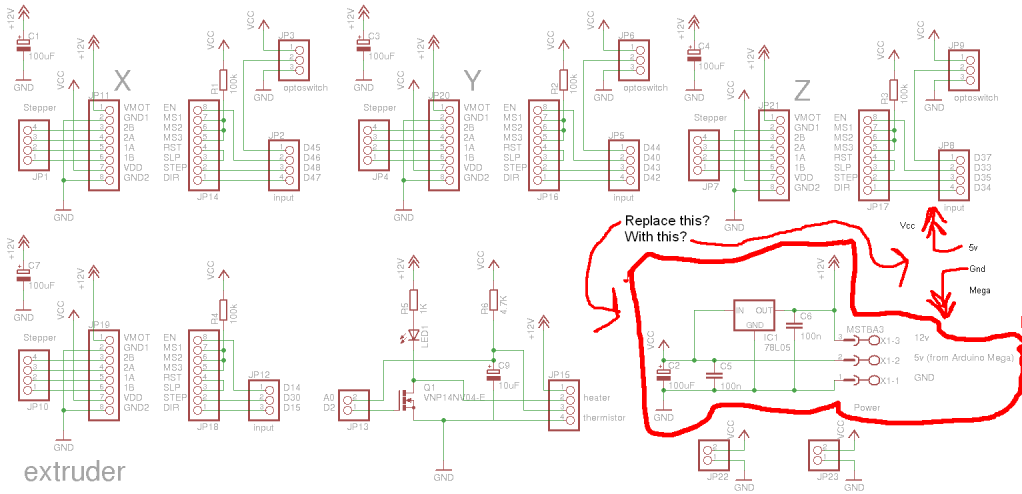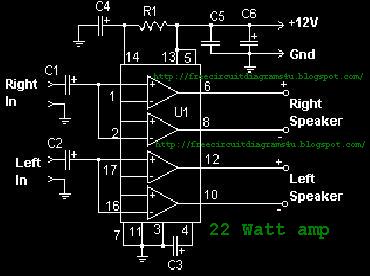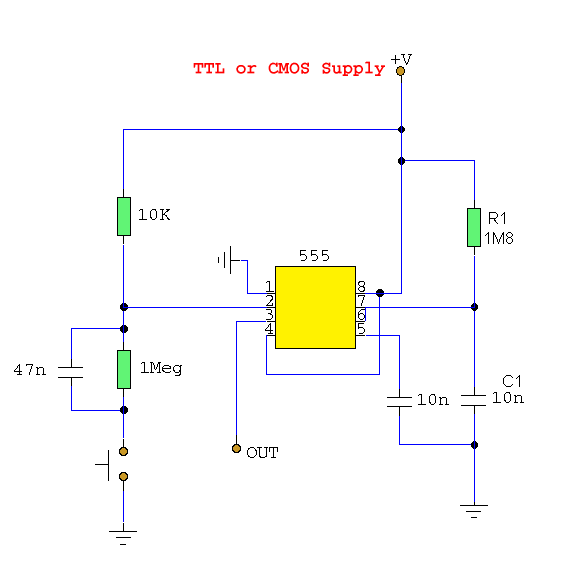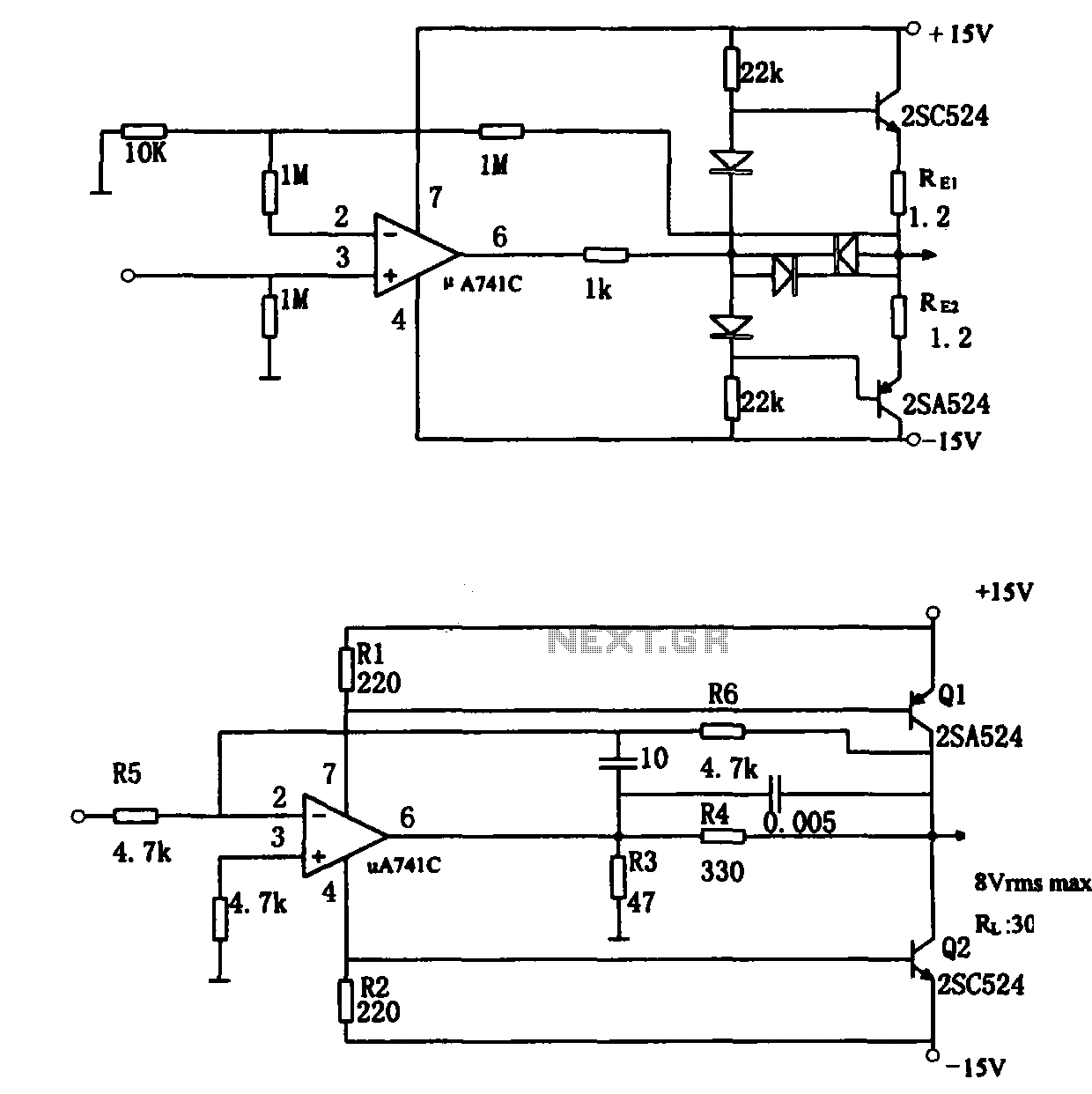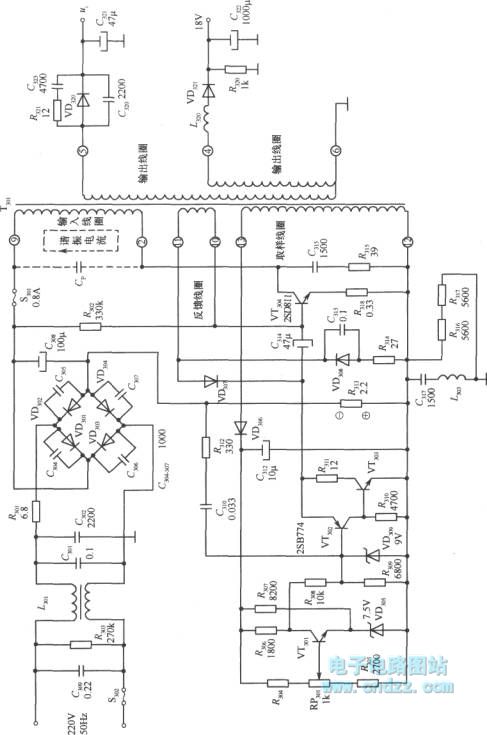
rf field strength meter circuit
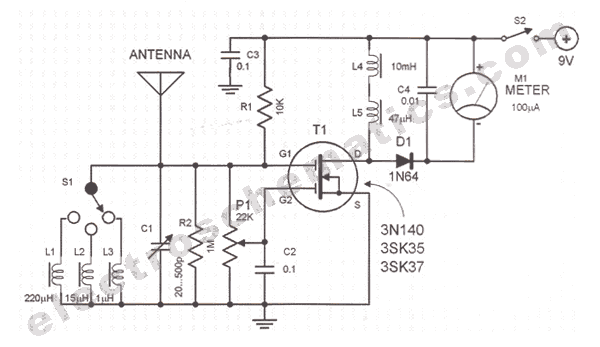
Comprehensive information regarding the RF Field Strength Meter Circuit is available. Users can learn about and download the RF Field Strength Meter Circuit online.
The RF Field Strength Meter Circuit is designed to measure the strength of radio frequency (RF) signals in the environment. This circuit typically consists of several key components including an RF detector, an operational amplifier, and a display unit, which can be an analog meter or a digital readout.
The RF detector is responsible for converting the incoming RF signal into a measurable voltage. This is often achieved using a diode or a specialized RF detector IC, which rectifies the RF signal and provides a corresponding direct current (DC) output proportional to the signal strength. The output from the detector is usually very low, requiring amplification.
An operational amplifier (op-amp) is employed to amplify the detected signal to a usable level. The op-amp configuration can be set up as a non-inverting amplifier to ensure that the output remains in phase with the input, thereby retaining the signal characteristics. The gain of the op-amp can be adjusted by selecting appropriate resistor values in the feedback loop, allowing for calibration of the meter to suit different measurement ranges.
The final stage of the circuit is the display unit, which translates the amplified signal into a human-readable format. In analog designs, a simple moving coil meter may be used, while digital circuits might employ an analog-to-digital converter (ADC) to provide a numerical readout. The choice of display type can affect the circuit's complexity and the ease of interpreting the results.
Power supply considerations are also critical; the circuit typically requires a stable DC voltage source to operate effectively. Battery operation is common for portable RF field strength meters, while mains-powered designs may incorporate voltage regulation to ensure consistent performance.
Overall, the RF Field Strength Meter Circuit is an essential tool in various applications, including telecommunications, broadcasting, and RF engineering, allowing users to assess signal quality and troubleshoot RF-related issues effectively.Good information about RF Field Strength Meter Circuit. You can learn and download RF Field Strength Meter Circuit online here.. 🔗 External reference
The RF Field Strength Meter Circuit is designed to measure the strength of radio frequency (RF) signals in the environment. This circuit typically consists of several key components including an RF detector, an operational amplifier, and a display unit, which can be an analog meter or a digital readout.
The RF detector is responsible for converting the incoming RF signal into a measurable voltage. This is often achieved using a diode or a specialized RF detector IC, which rectifies the RF signal and provides a corresponding direct current (DC) output proportional to the signal strength. The output from the detector is usually very low, requiring amplification.
An operational amplifier (op-amp) is employed to amplify the detected signal to a usable level. The op-amp configuration can be set up as a non-inverting amplifier to ensure that the output remains in phase with the input, thereby retaining the signal characteristics. The gain of the op-amp can be adjusted by selecting appropriate resistor values in the feedback loop, allowing for calibration of the meter to suit different measurement ranges.
The final stage of the circuit is the display unit, which translates the amplified signal into a human-readable format. In analog designs, a simple moving coil meter may be used, while digital circuits might employ an analog-to-digital converter (ADC) to provide a numerical readout. The choice of display type can affect the circuit's complexity and the ease of interpreting the results.
Power supply considerations are also critical; the circuit typically requires a stable DC voltage source to operate effectively. Battery operation is common for portable RF field strength meters, while mains-powered designs may incorporate voltage regulation to ensure consistent performance.
Overall, the RF Field Strength Meter Circuit is an essential tool in various applications, including telecommunications, broadcasting, and RF engineering, allowing users to assess signal quality and troubleshoot RF-related issues effectively.Good information about RF Field Strength Meter Circuit. You can learn and download RF Field Strength Meter Circuit online here.. 🔗 External reference
